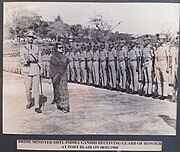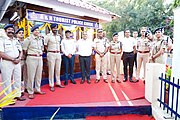
Law enforcement in India is imperative to keep justice and order in the nation. Indian law is enforced by a number of agencies. Unlike many federal nations, the constitution of India delegates the maintenance of law and order primarily to the states and territories.

The Punjab Police is the police agency responsible for law enforcement and investigations within the state of Punjab, India. Punjab Police has a broad array of specialized services, including the prevention and detection of crime, maintenance of law and order and the enforcement of the Constitution of India. Its headquarters are located at Jan Marg, Chandigarh. On 7 September 2011, Punjab Police started a video conferencing service to redress problems of NRIs. The present DGP of Punjab Police is Gaurav Yadav IPS. He is an IPS officer of 1992 batch.

Tamil Nadu Police is the primary law enforcement agency of the state of Tamil Nadu, India. It is over 150 years old and is the fifth largest state police force in India. Tamil Nadu has a police-population ratio of 1:632. The Director General of the Tamil Nadu police is Shankar Jiwal.
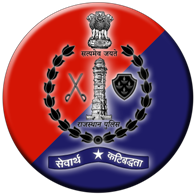
The Rajasthan Police is the law enforcement agency for the state of Rajasthan in India. The Rajasthan Police has its headquarters in the Jaipur, the state capital. The motto of the force is "committed to serve".
The Superintendent of Police (SP) is a rank in Indian police forces held by an officer who serves as the head of a police district primarily in rural areas. Other officers in SP rank may be appointed as the head of specialised wings, units or similar posts. In the commissionerate system in cities, an SP may be appointed as the Deputy Commissioner of Police (DCP) under the Commissioner of Police. Since the district magistrate is the administrative head of a district encompassing the police district, the SP reports directly to the district magistrate, who has general control and direction over police administration in the district. In the organisation, SP sends monthly reports to the Director General of Police (DGP) through the Inspector General of Police (IGP) and the Deputy Inspector General of Police (DIG).

Tripura Police is the law enforcement agency of the state of Tripura which organizes and is responsible for policing activities in the state of Tripura, Northeast India. It was formed in the year 1965. Currently V.S. Yadav, IPS is DGP of Tripura.
The Jarawas are an indigenous people of the Andaman Islands in India. They live in parts of South Andaman and Middle Andaman Islands, and their present numbers are estimated at between 250–400 individuals. They have largely shunned interaction with outsiders, and many particulars of their society, culture and traditions are poorly understood. Since the 1990s, contacts between Jarawa groups and outsiders grew increasingly frequent. By the 2000s, some Jarawas had become regular visitors at settlements, where they trade, interact with tourists, get medical aid, and even send their children to school.
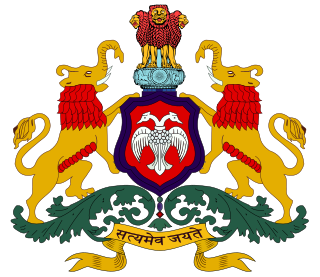
The Karnataka State Police is the law enforcement agency for the Indian state of Karnataka. It was established in 1965 and is headquartered in Bengaluru, the capital city of Karnataka. The KSP is a state police force that works under the purview of the Department of Home Affairs, Government of Karnataka. The department is headed by the Director General and Inspector General of Police.

Gazetted officers include all the Indian Police Service officers which are Class I officers of the cadre and all State Police Services officers of and above the rank of Deputy Superintendent of Police. All are arranged in a hierarchical order.

The Uttar Pradesh Police, is the primary law enforcement agency within the Uttar Pradesh state of India. Established in 1863 as the Office of the Inspector General of Police, United Provinces under the Police Act, 1861. It is headed by Director General of Police (DGP).
The Society for Andaman and Nicobar Ecology, also known as SANE, is an environmental organization based in the city of Port Blair, in the Andaman and Nicobar Islands, India. It was formed for the preservation of the Andaman ecosystem.
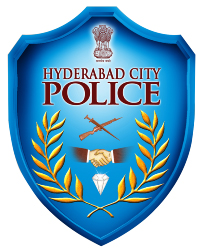
Hyderabad City Police is the local law enforcement agency for the city of Hyderabad, Telangana and is headed by the Commissioner of Police. The city police traces its origins to 1847 under Hyderabad State.
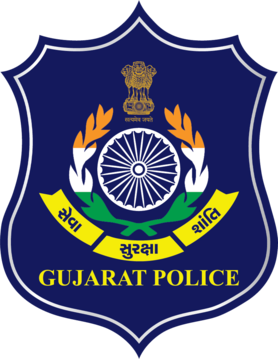
The Gujarat Police Department is the law enforcement agency for the state of Gujarat in India. The Gujarat Police has its headquarters in Gandhinagar, the state capital, and Ahmedabad.

The Andhra Pradesh Police is the law enforcement agency of the state of Andhra Pradesh, India. Public order and police being a state subject in India, the police force is headed by the Director general of police, Kasireddy Rajendranadh Reddy
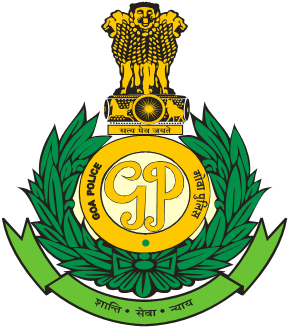
The Goa Police is the law enforcement agency for the state of Goa in India.

INS Jarawa is a naval base of the Indian Armed Forces under the joint-services Andaman and Nicobar Command located in Port Blair in the Andaman & Nicobar Islands. It was commissioned in 1964.

The Telangana State Police Department is the law enforcement agency for the state of Telangana in India. It has jurisdiction concurrent with the 33 revenue districts of the state. The police force was created from the remnants of the Andhra Pradesh Police after Telangana state was formed. It is headed by the Director general of police, Ravi Gupta, and headquartered in Hyderabad, Telangana.
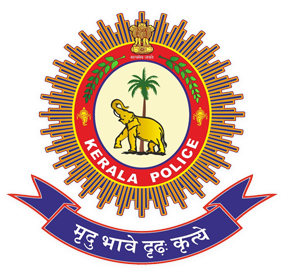
The Kerala Police is the law enforcement agency for the Indian state of Kerala. Kerala Police has its headquarters in Thiruvananthapuram, the state capital. The motto of the force is "Mridhu Bhave Dhrida Kruthye" which means "Soft in Temperament, Firm in Action" in Sanskrit. It operates under the Department of Home Affairs, Government of Kerala. The force is headed by the State Police Chief, and the incumbent chief is Shaikh Darvesh Sahib, IPS.
In India, the police forces of the states and union territories are responsible for law enforcement in the states and union territories. Police and Public Order are State subjects under the Seventh Schedule to the Constitution of India.

Commissioners of Police in India are IPS officers who head the police force in a police commissionerate. A police commissionerate can combine several adjoining districts under it. A Police Commissioner may or may not hold certain powers of the executive magistrate, contrary to the Superintendent of Police (SP) or Senior SP (SSP) in charge of a police district who depends on the district magistrate to issue orders. Commissioner of Police (CP) is a post that can be held by an IPS officer of the rank Deputy Inspector General of Police (DIG) and above, depending upon the sanction provided by the respective state government.




















